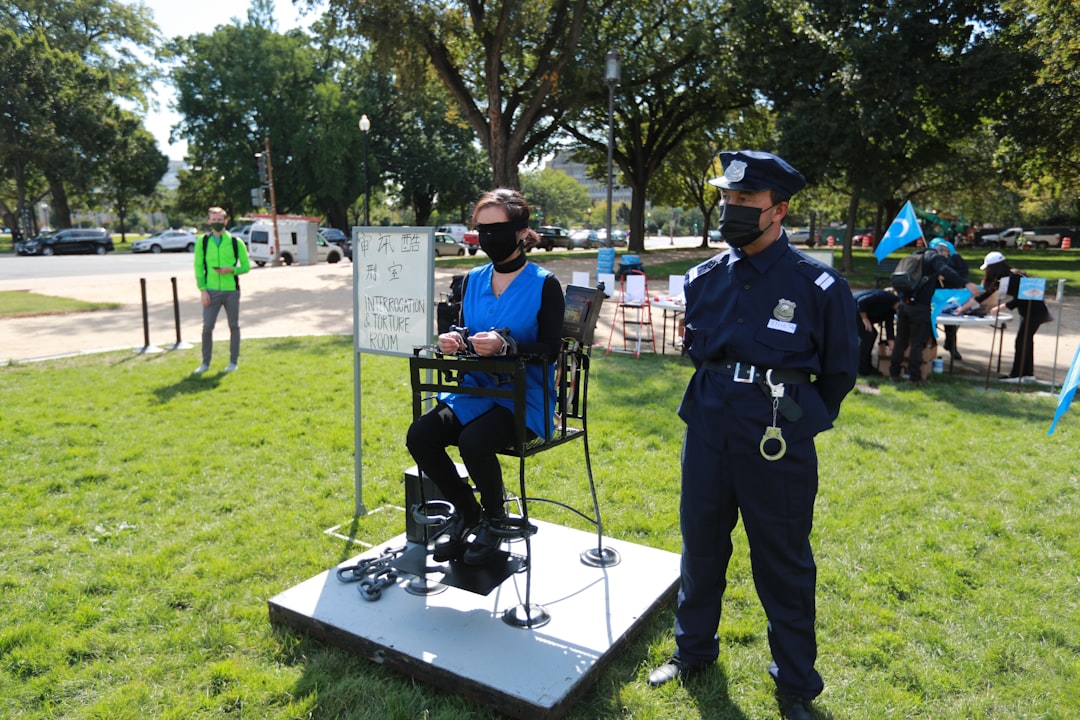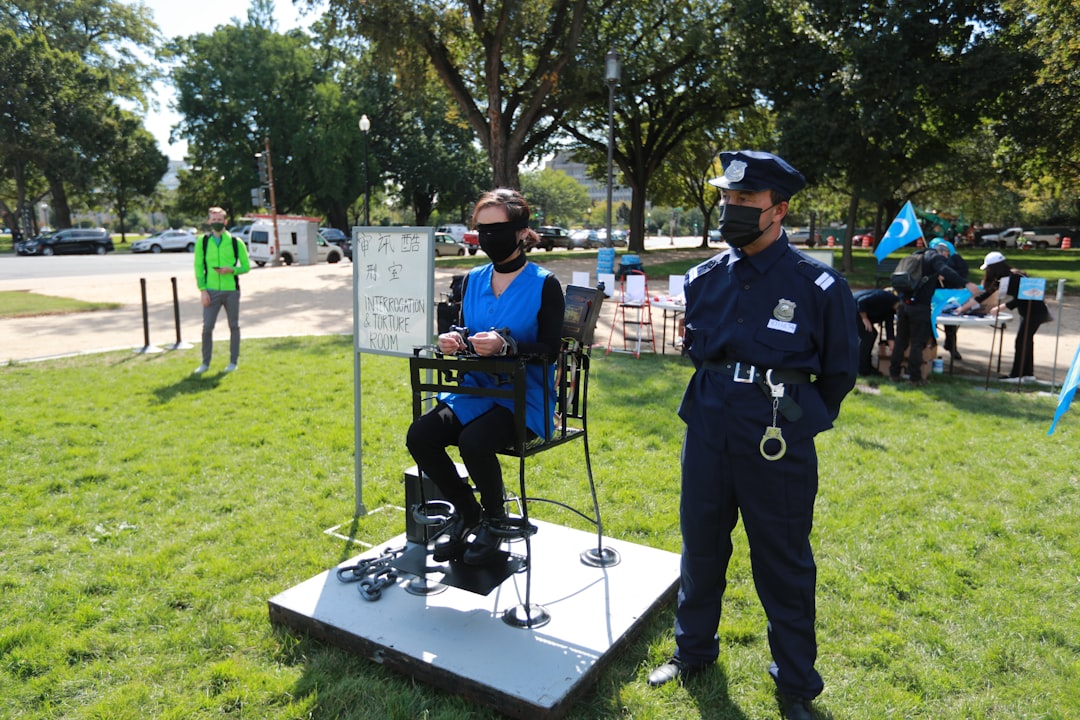For thousands of years, the Sanhedrin served as the supreme court and legal authority among the ancient Jews. As the highest Council of Jewish leaders, it played a pivotal role in shaping the Jewish society and culture. This article dives into the history, significance, and famous cases of the Sanhedrin, unearthing the rich legacy of biblical times that still holds relevance to the present-day Judaism. Read on to discover more about this court’s vast influence on religious law and tradition.
What was the Sanhedrin?

The Sanhedrin was a Jewish court that acted as a supreme court in ancient times. It was responsible for interpreting religious law, administering justice, and making decisions on political and religious matters. The Sanhedrin played a crucial role in the governance of the Jewish community and was considered to be the highest legal authority in Jewish society.
The Sanhedrin has its roots in biblical times, with the Torah mentioning a council of Jewish leaders that advised Moses. The institution was later revived during the time of the Second Temple, around the first century BCE. It continued to exist until the Roman destruction of the Temple in 70 CE. The Sanhedrin was initially composed of 71 members, including high priests, Pharisees, Sadducees, and Torah scholars. Later on, its composition changed, and it became primarily composed of Pharisees, who were seen as the guardians of Jewish tradition.

The Sanhedrin was responsible for interpreting the halakhah, the Jewish legal tradition, and had the power to impose punishments. It also had political power and could make decisions on matters concerning Jewish society, such as upholding the purity of the Temple. The Sanhedrin met in the Temple, but after its destruction, it moved to other locations, including a synagogue in Yavneh.
One of the most famous members of the Sanhedrin was Gamaliel, a rabbi who taught the Apostle Paul. He is mentioned in the New Testament, and his teachings are also found in rabbinic literature. The Sanhedrin also played a role in the trial and execution of Jesus, which is a significant event in Christian history.
After the destruction of the Temple, the Sanhedrin gradually lost its power and influence. However, its legacy continues to this day, with many of its teachings and practices recorded in the Mishnah and Talmud. The Sanhedrin serves as an important reminder of the role of religious law and legal authorities in ancient Jewish society.
To sum up, the Sanhedrin was an important institution in ancient Judaism that acted as a supreme court and had both legal and political power. It played a crucial role in interpreting the Jewish legal tradition and had an impact on Jewish society and culture. Its legacy continues to this day, and its teachings and practices continue to be studied by scholars and followers of the Jewish faith.
List of Key Takeaways:
- The Sanhedrin was a Jewish court that acted as a supreme court in ancient times.
- It was responsible for interpreting religious law, administering justice, and making decisions on political and religious matters.
- The Sanhedrin had political power and could make decisions on matters concerning Jewish society, such as upholding the purity of the Temple.
- Its composition changed over time, and it became primarily composed of Pharisees.
- The Sanhedrin’s legacy continues to this day, with many of its teachings and practices recorded in the Mishnah and Talmud.
History of the Sanhedrin in ancient Judaism
The Sanhedrin was a Jewish court with origins dating back to biblical times. It served as the legal authority in matters of religious law and was made up of some of the most prominent Jewish leaders and biblical scholars of their time.
The Sanhedrin was originally composed of 70 elders, as described in the Torah. However, it went through changes throughout history. During the first century, it was composed of Pharisees, Sadducees, and other Jewish leaders who were appointed by the high priest in Jerusalem.
The Sanhedrin played a vital role in Jewish society. As the supreme court of Jewish law, it was responsible for interpreting the Torah and maintaining the halakhic traditions of the Jewish faith. It also had the power to enforce its decisions within Jewish communities.
One of the most famous and significant cases heard by the Sanhedrin was that of Jesus of Nazareth, who was brought before the court on charges of blasphemy. The proceedings ultimately led to his crucifixion and the establishment of Christianity as a separate religion from Judaism.

Despite its importance, the Sanhedrin was dissolved following the destruction of the Second Temple in 70 CE. However, its legacy lived on through rabbinic literature and Jewish tradition. The Mishnah, a collection of Jewish oral law compiled by Rabbi Judah HaNasi, was written shortly after the dissolution of the Sanhedrin. It is believed that Rabbi Gamaliel, a prominent member of the Sanhedrin and a famed Talmudic scholar, had a significant influence on the compilation of the Mishnah.
The Sanhedrin was eventually re-established in the city of Yavneh, after the Romans forbade its existence in Jerusalem. However, the re-established Sanhedrin did not hold the same legal authority as its predecessor.
In conclusion, the Sanhedrin was a crucial part of ancient Judaism and played a significant role in Jewish society. It was composed of some of the most prominent Jewish leaders and biblical scholars of the time and was responsible for interpreting the Torah and maintaining the halakhic traditions of the Jewish faith. Though it was dissolved following the destruction of the Second Temple, its legacy lived on through rabbinic literature and Jewish tradition.
The role of the Sanhedrin in Jewish society
The Sanhedrin played a crucial role in ancient Jewish society as a religious court with legal authority over matters of Jewish law. The court was composed of 71 members, including the high priest and other Jewish leaders.
The Sanhedrin held a unique legal position in Jewish culture. They were responsible for interpreting the Torah and applying it to daily life. Their decisions had a profound impact on Jewish society and were followed by Jewish leaders and scholars across the region.
The Sanhedrin was not only a legal entity but also a center of Jewish culture. It served as a gathering place for Jewish scholars and leaders to discuss matters of Jewish tradition, faith, and culture. The high priest was responsible for making authoritative decisions on religious matters such as sacrifices and offerings in the temple. The court was also responsible for appointing judges and overseeing the affairs of the synagogue.
« The Power of Spiritual Growth: Embarking on a Journey Within
Exploring the Fascinating Life of James: His Story, Legacy, and Impact »
The Sanhedrin played a critical role in maintaining Jewish society’s social structure, ensuring that everyone adhered to Jewish law and tradition. They enforced standards of morality and ethics, which included punishments for immoral behavior and illegal activities such as theft and murder. They also acted as intermediaries between the Jewish people and the ruling authority in Jerusalem and Rome.
Famous cases tried by the Sanhedrin include the trial of Jesus, which resulted in his crucifixion. The court also oversaw the execution of Stephen, a prominent follower of Jesus. Despite their role in these high-profile cases, the Sanhedrin’s primary goal was to maintain Jewish law and order, not to engage in political or religious power struggles.
The Sanhedrin’s legacy endured even after its dissolution by the Roman authorities in 358 CE. Its decisions and legal rulings were still considered authoritative by Jewish scholars, and they continued to shape Jewish law and tradition for generations to come. The Sanhedrin’s influence can be seen in the development of rabbinic literature, including the Talmud and Mishnah, which drew heavily upon the work of Sanhedrin members like Gamaliel and Rabbi Akiva.
Overall, the Sanhedrin was a vital and influential institution in ancient Jewish society, playing a crucial role in maintaining Jewish law, tradition, and culture. Their legacy continues to shape modern Jewish practice and belief.

In summary, the role of the Sanhedrin in ancient Jewish society can be summarized as follows:
- Serving as a religious court with legal authority over matters of Jewish law.
- Interpreting the Torah and applying it to daily life, with their decisions having a profound impact on Jewish society.
- Serving as a center of Jewish culture, gathering scholars and leaders to discuss matters of Jewish tradition, faith, and culture.
- Maintaining Jewish society’s social structure and enforcing standards of morality and ethics.
- Acting as intermediaries between the Jewish people and ruling authorities in Jerusalem and Rome.
- Being responsible for appointing judges and overseeing the affairs of the synagogue.
Membership and composition of the Sanhedrin
The Sanhedrin was a Jewish court and council that played a significant role in religious law and Jewish culture during ancient times. This influential group was responsible for interpreting Torah and other Jewish scriptures, resolving disputes, and enforcing Jewish law.
The Sanhedrin was comprised of 71 members, including the high priest, religious leaders, and legal experts known as rabbis. These members were divided into three groups: the highest-ranking members, who were the leaders of the Sanhedrin, the middle-ranking members, who were tasked with the responsibility of administering justice, and the lowest-ranking members, who were responsible for recording court proceedings.
The seat of the Sanhedrin was in Jerusalem, inside the Temple, and its legal authority was recognized throughout all of Jewish society. Members of this Jewish court were required to be Torah scholars, ensuring that their decisions were always informed by Jewish tradition and halakhah, or Jewish law.
Members of the Sanhedrin were appointed through a complex system of nomination and election. The high priest held significant influence in this process, but other Jewish leaders were also involved in selecting members of the court. To qualify for membership, one had to be a Jewish male over the age of twenty-five, fluent in Hebrew, and free from blemishes that would disqualify them from serving in the Temple.

Many prominent Jewish figures served on the Sanhedrin, including Gamaliel, a respected rabbi and a teacher of the Apostle Paul, and the revered Rabbi Hillel. These wise and learned individuals were considered to be the pinnacle of Jewish leadership at the time.
The Sanhedrin played an essential role in Jewish society during biblical times. It was the supreme court of all legal matters in the Jewish community, and its decisions were respected and honored by all. As such, members of the Sanhedrin were highly respected and admired within the community.
In conclusion, the Sanhedrin was a group of highly learned and respected Jewish leaders responsible for interpreting Jewish scriptures and enforcing Jewish law. Its members were required to be Torah scholars, and they played a crucial role in Jewish society during biblical times. Understanding the composition and membership of the Sanhedrin provides valuable insight into the history and significance of ancient Judaism.
Famous cases and rulings by the Sanhedrin
The Sanhedrin, the supreme Jewish court, was responsible for interpreting and enforcing religious law in ancient Judaism. Over the centuries, the Sanhedrin dealt with many important cases that shaped Jewish tradition and values. Here are some of the most notable cases and rulings made by the Sanhedrin:
-
The case of Jesus:
Perhaps the most famous case ever handled by the Sanhedrin was the trial of Jesus. Jesus was brought before the Sanhedrin on charges of blasphemy and ultimately sentenced to death by crucifixion. The Sanhedrin’s decision has been a subject of controversy ever since, with some arguing that Jesus was innocent and others contending that he deserved to be punished for his teachings. -
The Hillel-Shammai dispute:
Two of the most influential teachers in Jewish history, Hillel and Shammai, had a longstanding disagreement over the interpretation of Jewish law. The Sanhedrin had to decide which of them was correct, and ultimately sided with Hillel’s more lenient approach. -
The trial of Rabbi Akiva:
Rabbi Akiva was one of the most important rabbis of the second century CE. He was arrested and put on trial by the Romans for his support of Jewish rebels, and the Sanhedrin was called upon to intervene. The Sanhedrin ultimately decided that Rabbi Akiva’s actions were justified and did not constitute a violation of Jewish law. -
The case of the daughters of Zelophehad:
In the book of Numbers, the daughters of Zelophehad argue that they should be allowed to inherit their father’s land, even though Jewish law at the time did not allow for female inheritance. The Sanhedrin ultimately ruled in their favor, setting a precedent for gender equality in Jewish law. -
The trial of Elisha ben Abuya:
Elisha ben Abuya, also known as Acher, was a famous rabbi who ultimately apostatized from Judaism. The Sanhedrin was called upon to judge his case and ended up excommunicating him from Jewish society.

These are just a few examples of the many cases that the Sanhedrin dealt with over the centuries. Even today, the Sanhedrin remains an important symbol of Jewish legal authority and religious tradition.
Dissolution and legacy of the Sanhedrin
After the Roman destruction of the Second Temple in 70 CE, the Sanhedrin lost its legal authority and its power over Jewish society. With the Temple in ruins and the Jewish people scattered throughout the world, the Sanhedrin was no longer able to function as a central governing body.
However, even after the Sanhedrin was dissolved, its legacy continued to impact Jewish tradition and the legal authority of Torah scholars. The Sanhedrin’s rulings and decisions were codified into the Mishnah and Talmud, ensuring that its teachings and influence would endure for generations to come.
One of the Sanhedrin’s most famous members, Rabbi Yochanan ben Zakkai, is said to have established a school in Yavneh (located near modern-day Tel Aviv) in the years following the destruction of the Temple. This school became a central hub for Jewish scholarship and tradition, and many of the Sanhedrin’s members continued to teach and disseminate their legal knowledge and religious teachings.
The legacy of the Sanhedrin also had a profound impact on Jewish culture and the development of the synagogue as a place of religious worship and community gathering. With the Temple no longer in existence, the synagogue became a central focus of Jewish life and the Sanhedrin’s influence helped to establish the framework for the liturgy and prayers that are still used today.

In summary, although the Sanhedrin lost its legal authority and was dissolved after the destruction of the Second Temple, its teachings and legacy continued to impact Jewish tradition, culture, and legal authority for generations to come. Its influence can still be felt in the ongoing study of halakhah (Jewish law) and the continued importance of Torah scholars and leaders in Jewish society.












